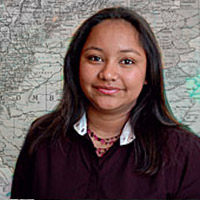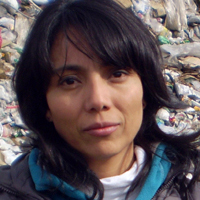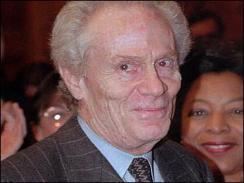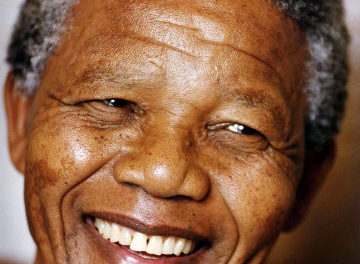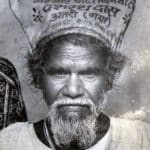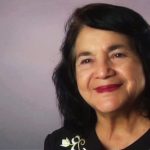Tired of witnessing violence, seeing friends and family members killed and fearing for their own safety, youth from the most dangerous cities throughout Colombia began to rise up for peace in 1996. This was no simple task since the 38-year civil war had displaced over one million people from their homes and 300,000 Colombians, many of them women and children had lost their lives. The 15-year-old Farlis Calle Guerrero was one of the brave young teens who rose up to inspire her nation towards peace.
Born in 1981 to a humble family who worked in the banana plantation, Farlis Calle never knew what it was like to live in a country at peace. A brutal war between the major political factions had been fought her entire life and displaced 1 out of every 37 Colombians. Forced to flee to cities for safety, the families face homelessness, poverty, violence, and hopelessness. As children reach their teen years, they would often join the guerrilla armies sometimes for revenge of a loved one, sometimes because they could see no alternative, but often because they had been kidnapped.
“How can we learn to be peaceful if our teachers do not help us understand what it means? No one here has ever lived in peace. We have been fighting from the time we were born.” – Farlis Calle
One of the worst years was in 1996 when 4,322 children were killed and many more died of hunger and sickness. The region of Uruba in the North West is home to the largest drug cartels and the worst violence. At the heart of the region, a town named Apartadó experienced the worst of the violent massacres, murder, and poverty. It was in this town that Farlis Calle lived. It was in this town that Farlis Calle witnessed the beheading of her friend as she attempted to complete her high school education. And, it was in this town that Farlis Calle would begin a nationwide movement for peace.
That same year (1996) the U.N. Secretary-General appointed Graça Machel to study the “Impact of Armed Conflict on Children.” Machel’s study led her to Colombia and eventually to Apartadó. The Mayor of Apartadó asked the children and students if they would be willing to share their experience. As the student council president at her high school, Farlis knew this was their chance to bring international attention to their suffering. Farlis organized her fellow students to prepare a presentation for Graça Machel.They split into councils each with the task of presenting one of their many grievances. After the student council worked for two days they realized they had more than just stories of anger, pain, loss, and fear. They realized that they as children had some power, and they could offer suggestions for change and answers to some of their problems. Farlis worked with the student council to draft a Declaration for the Children of Apartadó which clearly stated the problems they faced, but also their solutions. The presentation received overwhelming support from the regional schools, churches and youth organizations and nearly 5,000 students came to the presentation equipped with posters, poems, letters, pictures and more. At the presentation, Farlis read the Declaration.
“The Declaration of the Children of Apartadó (Colombia) stated that, although we have many problems, we also have the capacity to overcome them. While it is not in the power of children to stop the killing and assassination, we must always denounce it.”
“We wrote that neither the guerrillas nor the paramilitaries held the solution to our problems, and they had no role to play in the future of Apartadó. On the contrary, we – the young people – need to be a part of those solutions so that our own children will not suffer as we have done.” – Farlis Calle
Graça Machel was moved, not only by the stories they shared but the willingness of the children to be a part of the solution. As Machel returned to the U.N. with her study, Farlis and other students began to implement some of the ideas they had discussed. Recognizing that the Colombian Constitution allowed citizens form local democratic governments, the youth elected Farlis Calle as the first Child Mayor of Apartadó and began to form a government that would work towards peace. Soon hundreds of children would participate in the usually chaotic peace meetings at local parks and fields. Eventually, their organizing began to work and the youth created “peace zones” and “peace carnivals” designed to encourage children from feuding communities to have fun together and build positive bonds.
Aware that their situations and experiences with violence were very similar, Farlis Calle and two dozen youth (notably Juan Elias Uribe, Dilia Lorenzo, Wildrido Zambrano and Mayerly Sanchez) who came from different regions of Colombia, gathered to organize what would become “The Children’s Peace Movement.” They needed to expose the adult population to the impact of the war on children and include adults in their efforts. The youth utilized radio shows at schools to spread their message, set up peer counseling groups for war-affected children, employed sock puppets to teach kids about forgiveness and how to deal with hurt and met with adults to educate about their problems and plead their cause.
A few months later, the Children’s Peace Movement with the help of the U.N. Children’s Fund (UNICEF), organized a nation-wide special election for the youth. The Children’s Peace Movement selected twelve basic rights for children to select as the most important. Some of their choices would be the right to an education, the right to a clean environment, the right to be different, the right to justice, and the right to peace. Farlis and the other youth coordinated the polling places with the local governments, UNICEF, and other organizations. They also toured schools around the nation to educate students about their rights and the voting process.
That November, nearly 3 million children between the ages of 7 and 18 came out to vote. The expected turnout was originally for about 500,000 voters. In the 100 most violent regions, over 90% of the children came to vote overwhelmingly for peace and justice. Perhaps even more surprising is that the guerrillas, drug cartels, and the government honored the children’s pleas for a ceasefire on the voting day. This bold gesture galvanized the peace effort across Colombia, which had previously been weak due to assassinations of many adult peace leaders and human rights activists.
“We can’t change the whole world alone, but if I can teach people that if you put your hand in mine and little by little we join more hands…maybe we can construct a new world.” – Farlis Calle
A year later, 10 million adults across Colombia would vote on a Citizen’s Mandate for Peace that would officially ban fighting from taking place around schools, humanitarian projects and public areas with children. This would be the highest turnout for any election in Colombia. Many of the adults had been educated on their rights and the voting process by their children. The government also outlawed internal hiring of the violent paramilitary forces they were using to fight rebel groups.
Though the violence and the struggles between the drug cartels continue to this day, Colombians now have had their imaginations of peace awakened. The efforts of the children in Colombia not only changed their country’s path, but it also inspired youth and adults to push for peace in Mexico and Western Africa.
Farlis Calle Guerro is currently studying public policy and government in the United States with plans to return to Colombia and work for peace within the government. She is featured as a Moral Hero for her organizational efforts for peace and continued persistence despite the violence around her. She awoke a national imagination and proved once again that “youth are more than a country’s future, they are its present.”

